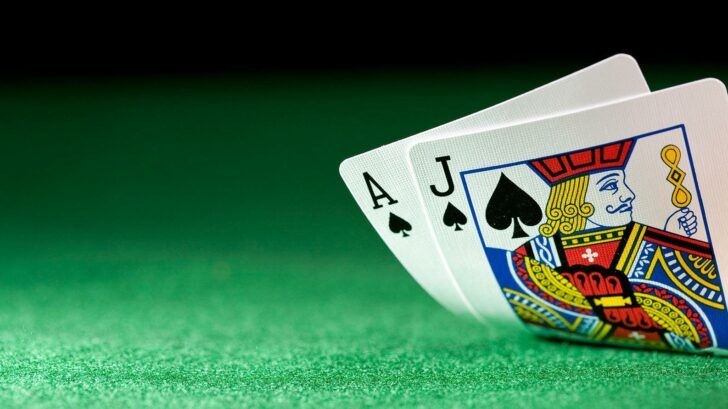4 Ways Casinos Cheated Customers According to Arnold Snyder

Nevada casinos are hyper-regulated in the present era. But old timers like Arnold Snyder and his friend Mickey MacDougal remember a bygone era of rampant cheating.
Disclaimer: This article relies on first-hand accounts of casino cheating provided by blackjack pro Arnold Snyder, as well as second-hand accounts he received from Mickey MacDougal.
The gambling industry has changed a lot in recent decades. Casino floors are now stuffed with electronic slot machines, most blackjack tables have an automatic shuffler, and surveillance staff spends all day monitoring video with the objective of sniffing out card counters.
While many aspects of the industry’s evolution have made it harder for card sharps and blackjack strategy experts to make a living, there is one way in which casinos are now much friendlier to the player. That is the way in which they are regulated.
In today’s polite, honest era the Nevada Gaming Control Board subjects each of the state’s casinos to strict oversight. Undercover inspectors monitor whether blackjack games are being dealt properly, and slot machines are audited. It’s tough for a casino to make a dishonest buck these days, and it’s doubtful that any of them try.
But several decades ago things were a lot rougher around the edges. Casino gambling expert, writer and Blackjack Hall of Fame member Arnold Snyder recently recounted some real-life casino cheating scams he observed during the 1960s and 1970s, when Las Vegas was the still the Wild West.
#1: The Anchor Blackjack Strategy
One 1960s scam that Snyder recalled in his book Beat the Dealer was use of an “anchor.” This was a classic teamwork cheat by which one of the players would actually be on the casino’s payroll. The dealer would read the top card using a peeking or marking technique, then relay that information to the anchor using a subtle signal.
The anchor would always sit at “third base,” so would be the last player to receive a card before the dealer. If the dealer deemed that the top card could make him bust, he would signal to the anchor to hit.
If the top card played into his favor, the anchor would stand. This dirty trick allowed dealers to win a lot more hands and rake in more money for the house. If done properly, players had no idea.
#2: The Turnover
According to Snyder and his friend Mickey MacDougall, this sleight-of-hand trick occurred when the dealer was picking up discards. The dealer was supposed to place the discards face up under the face-down ones on top, in the order in which they were originally dealt
As the dealer picked up the discards, however, he subtly stacked them in an order favorable to himself.
He then waited for another moment to apply a bigger sleight-of-hand move, imperceptibly turning the deck over so that his prearranged stack of cards were now on top and ready to be dealt.
Snyder claims that he once witnessed this trick firsthand at the Automobile Club in Nashville, Tennessee during the 1960s. Astute players could pick up on this trick, however, by noticing the dealer inching one half of the pack downward in preparation for the sleight-of-hand.
#3: The False Shuffle and Second Deal
Another deceptive blackjack strategy used to scam players was a simple yet subtle sleight-of-hand that often provided the basis for more elaborate blackjack cheating scams. The trick is self-explanatory: the dealer pretends to shuffle the cards when in reality they are left in their original position.
Only a very skilled dealer could pull it off, but if successful, it allowed him to manipulate the deck so that he knew where certain cards were in the deck. Once the “shuffle” was complete, the dealer could manipulate his knowledge by using a “second deal,” another sleight-of-hand in which he would make it appear like he dealt the first card from the deck when in reality he dealt the second.
Used in tandem, these maneuvers allowed the dealer to manipulate the outcome of the game in his favor. By dealing low cards to the players while reserving higher ones for himself, he could win more hands than he otherwise would have. According to Snyder, these tricks were fairly common at Las Vegas casinos during the 1960s.
#4: The Short Shoe
Casinos started dealing out of 2,4,6, and 8-deck shoes in the early 1970s. According to blackjack legend Mickey MacDougall, the Nevada Gaming Control Board advocated the use of shows in order to prevent the kind of sleight-of-hand scams that were not uncommon in single deck games.
The birth of the shoe gave rise to allegations that casinos were cheating players by removing Tens, Aces and facecards from shoes. MacDougall claims that dealers did this by, following a blackjack, covertly dropping the Ace and facecard into the waste bin while making it look like they were placed in the discard rack.
Removing the cards after play began allowed the shoe to get past initial inspection, and the chances of a blackjack occurring gradually decreased throughout the course of the evening. It was especially hard on those using card counting systems, who would run up high counts but still lose the majority of hands.
This is something that a Nevada casino would never get away with these days, but blackjack gurus like MacDougall and Steve Forte swear that they fell victim to it during the 1960s and 1970s.




